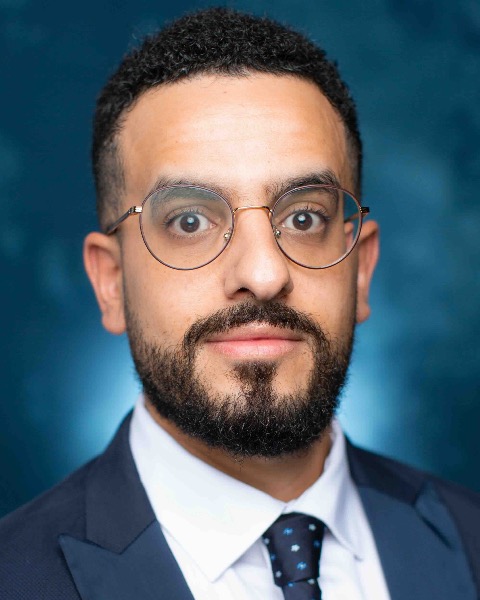Monday Poster Session
Category: Interventional Endoscopy
P3589 - Successful Endoscopic Repair of a Complex Bile Duct Injury
Monday, October 27, 2025
10:30 AM - 4:00 PM PDT
Location: Exhibit Hall

Ahmed Shukri, MD
Texas Tech University Health Sciences Center
Lubbock, TX
Presenting Author(s)
Ahmed Shukri, MD1, Atul Ratra, MD1, Kanak Das, MD2
1Texas Tech University Health Sciences Center, Lubbock, TX; 2Texas Tech University, Lubbock, TX
Introduction: Laparoscopic cholecystectomy, while minimally invasive, can result in complications ranging from mild bile duct injury to complete biliary ductal transections. Endoscopic stenting is typically effective for small bile duct injuries and leaks and is often the first-line management. In contrast, surgical repair is generally reserved for more complex injuries. We present a case of complex bile duct injury sustained during cholecystectomy, which was successfully managed using ERCP with the placement of multiple biliary stents to seal the defect and avoid surgical intervention.
Case Description/
Methods: A 37-year-old woman presented to our hospital with ascending biliary cholangitis. She had a history of symptomatic cholelithiasis status post laparoscopic cholecystectomy performed at an outside hospital three months earlier. Postoperatively, she developed a bile leak noted on HIDA scan. A follow-up diagnostic laparoscopy was performed at the external facility with clipping of the cystic duct stump and an accessory cystic duct arising from the common bile duct. ERCP at the outside hospital led to the placement of a plastic biliary stent. However, this failed to completely resolve the injury, and the patient subsequently developed a biloma and abscess in the gallbladder fossa. Repeat ERCP at our hospital revealed an occluded biliary stent with filling defects suggestive of clots from recent procedures, and contrast extravasation from the right intrahepatic branch near surgical clips, consistent with an active bile leak from the amputated posterior right lobe ducts. The occluded stent was removed. The injury was successfully repaired with the combined placement of one 10 mm × 6 cm covered metal stent 5 cm into the common bile duct below the bifurcation, one 10 Fr × 7 cm plastic stent 9 cm into the right posterior bile duct, and another 7 Fr × 9 cm stent 9 cm into the right middle hepatic duct to fully seal the defect. Follow-up cholangiography showed good flow without further leak. Stents were removed after 12 weeks during follow-up ERCP, confirming complete healing.
Discussion: This case illustrates the complexity of cholecystectomy-related biliary injuries, especially after failed prior interventions. Surgical repair is often used but carries added risks, including postoperative biliary strictures. Our case highlights that complex bile duct injuries can be effectively managed with a combination of endoscopic techniques and should be considered prior to pursuing open surgery.
Disclosures:
Ahmed Shukri indicated no relevant financial relationships.
Atul Ratra indicated no relevant financial relationships.
Kanak Das indicated no relevant financial relationships.
Ahmed Shukri, MD1, Atul Ratra, MD1, Kanak Das, MD2. P3589 - Successful Endoscopic Repair of a Complex Bile Duct Injury, ACG 2025 Annual Scientific Meeting Abstracts. Phoenix, AZ: American College of Gastroenterology.
1Texas Tech University Health Sciences Center, Lubbock, TX; 2Texas Tech University, Lubbock, TX
Introduction: Laparoscopic cholecystectomy, while minimally invasive, can result in complications ranging from mild bile duct injury to complete biliary ductal transections. Endoscopic stenting is typically effective for small bile duct injuries and leaks and is often the first-line management. In contrast, surgical repair is generally reserved for more complex injuries. We present a case of complex bile duct injury sustained during cholecystectomy, which was successfully managed using ERCP with the placement of multiple biliary stents to seal the defect and avoid surgical intervention.
Case Description/
Methods: A 37-year-old woman presented to our hospital with ascending biliary cholangitis. She had a history of symptomatic cholelithiasis status post laparoscopic cholecystectomy performed at an outside hospital three months earlier. Postoperatively, she developed a bile leak noted on HIDA scan. A follow-up diagnostic laparoscopy was performed at the external facility with clipping of the cystic duct stump and an accessory cystic duct arising from the common bile duct. ERCP at the outside hospital led to the placement of a plastic biliary stent. However, this failed to completely resolve the injury, and the patient subsequently developed a biloma and abscess in the gallbladder fossa. Repeat ERCP at our hospital revealed an occluded biliary stent with filling defects suggestive of clots from recent procedures, and contrast extravasation from the right intrahepatic branch near surgical clips, consistent with an active bile leak from the amputated posterior right lobe ducts. The occluded stent was removed. The injury was successfully repaired with the combined placement of one 10 mm × 6 cm covered metal stent 5 cm into the common bile duct below the bifurcation, one 10 Fr × 7 cm plastic stent 9 cm into the right posterior bile duct, and another 7 Fr × 9 cm stent 9 cm into the right middle hepatic duct to fully seal the defect. Follow-up cholangiography showed good flow without further leak. Stents were removed after 12 weeks during follow-up ERCP, confirming complete healing.
Discussion: This case illustrates the complexity of cholecystectomy-related biliary injuries, especially after failed prior interventions. Surgical repair is often used but carries added risks, including postoperative biliary strictures. Our case highlights that complex bile duct injuries can be effectively managed with a combination of endoscopic techniques and should be considered prior to pursuing open surgery.
Disclosures:
Ahmed Shukri indicated no relevant financial relationships.
Atul Ratra indicated no relevant financial relationships.
Kanak Das indicated no relevant financial relationships.
Ahmed Shukri, MD1, Atul Ratra, MD1, Kanak Das, MD2. P3589 - Successful Endoscopic Repair of a Complex Bile Duct Injury, ACG 2025 Annual Scientific Meeting Abstracts. Phoenix, AZ: American College of Gastroenterology.
